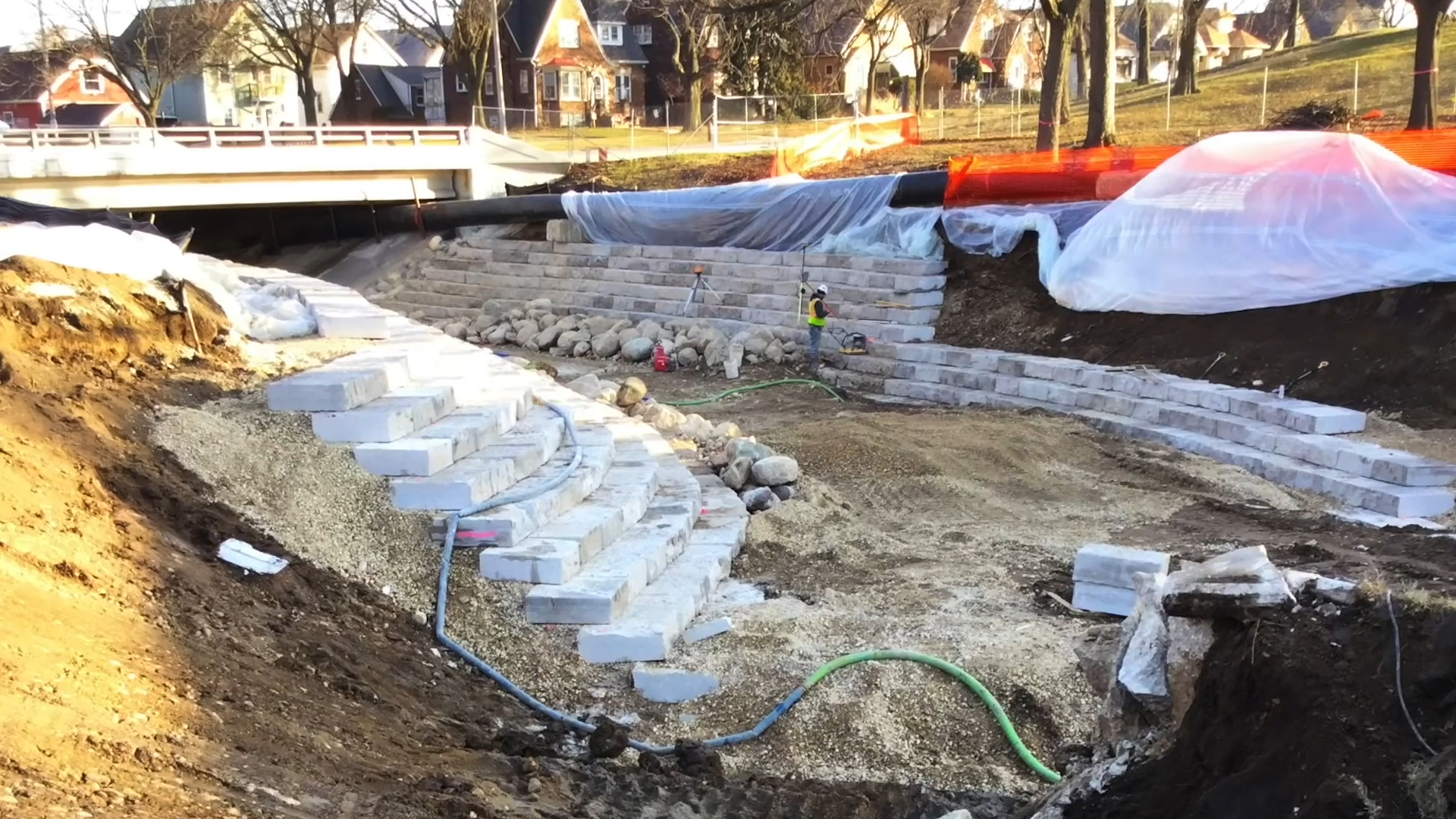
Milwaukee’s Kinnickinnic River might just be the latest example of a new mantra among urban planners: if you un-build it, they will come.
The $390 million revitalization project on the city’s smallest river started a decade ago and is projected to last until 2035. The seven miles of concrete poured into the riverbed in the 1960s to help rainwater move more quickly to Lake Michigan are slowly being torn out, and the river returned to its natural past.
Well, mostly.
“We try and mimic as much as we can in nature,” said Patrick Elliott, a senior project manager for the Milwaukee Metropolitan Sewer District. The MMSD has replaced the concrete chute with rock lining and vegetation, and even let the river meander as it would naturally.
But, Elliott concedes, “we still have a very urban watershed. We also have to move underneath existing bridges and other infrastructure. So we have to force the river to go in certain areas.”
So far, engineers have removed all the concrete from a stretch of the river near Pulaski Park, planted native vegetation and enhanced flooding protection measures.
The long-term goals for the project include improving public health, improving water quality and reducing flood risks.
This last problem has been a longtime concern for residents. Travis Hope of the KK River Neighbors in Action says that the water has always been an attraction for kids and, when the channelized river was overwhelmed by rain, kids could fall in and drown. Pulling out the concrete will make the river safer and more enjoyable to visit.
“I definitely feel like it’s going to be seen as an asset in years to come,” Hope said.
Kelly Moore Brands, the environmental projects coordinator at Sixteenth Street Community Health Centers, agrees that flooding has been a major concern for years.
“One of the reasons that Sixteenth Street’s Department of Environmental Health got involved in the river project was because of the historic flooding,” said Moore Brands by email. “When the river floods, backups occur, sending sewage into people’s basements.”
Moore Brands said the sewage itself presents an obvious problem, but even after the water is gone, it can cause mold to grow. That exacerbates other health concerns, like asthma.
“Our hope is that the Kinnickinnic River improves in water quality over time, creating safe and healthy habitat for aquatic life as well as human life,” Moore Brands said.
Other parts of the Kinnickinnic River have received more than just a facelift in recent years. Another cleanup project by the Wisconsin Department of Natural Resources in 2009 resulted in the removal of 170,000 cubic yards of contaminated sediment, which included 1,200 pounds of PCBs and 13,000 pounds of PAHs.
Then in 2016, engineers removed approximately 1,000 feet of concrete from the city’s Menomonee River to encourage more fish to swim through. Projects like this, as well as the ongoing restoration work, will result in less pollution pouring into Lake Michigan and a more hospitable environment for aquatic creatures.
The only downside of the Kinnickinnic River project so far has been the removal of old trees and homes. Starting in 2010, the MMSD began purchasing 83 homes on the banks of the river then demolishing them to make way for the river’s new trajectory. The same thing happened to some of the large old trees that grew above the channelized river.
“That’s always the downside of these projects, you have to come in and remove some good stuff,” Elliott said. “But it’s needed to bounce back and put in a better overall product.”




